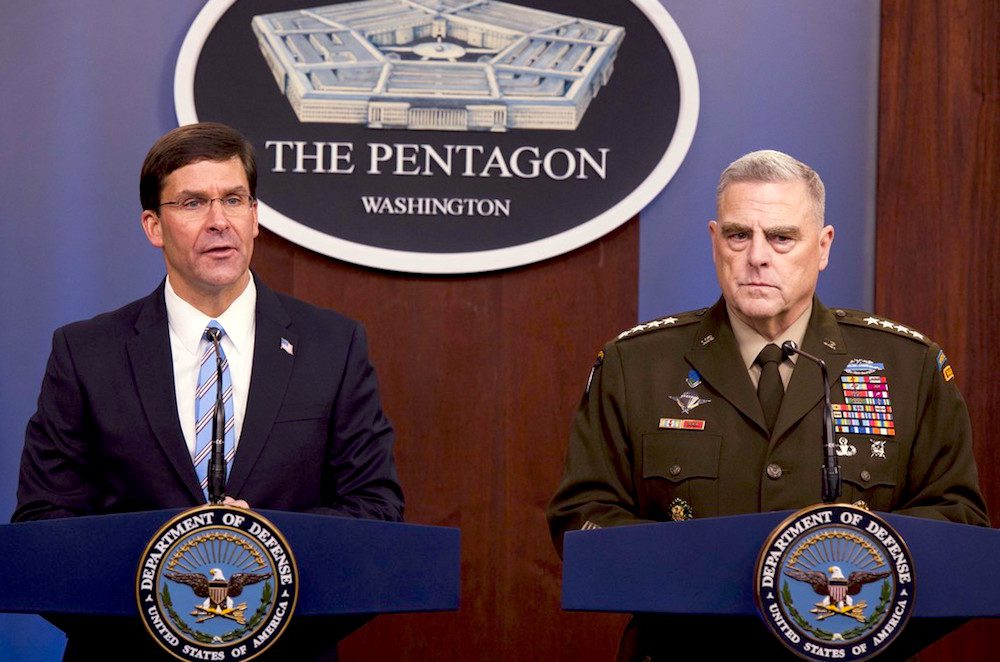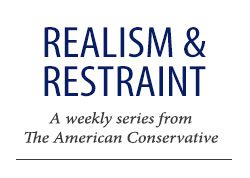Why the ISIS ‘Threat’ Is As Old As Cold War Bunk

Americans normally question involvement in faraway conflicts but support them when the threat justifies it. Once the adversary is eliminated or controlled, however, Americans favor disengagement, shifting their focus to challenges with a greater direct impact on their lives.
To counter this inclination, and to undertake foreign entanglements, justify large military expenditures, and make themselves appear tough by relying on threat inflation. Today the Islamic State or ISIS has taken center stage in this tradition, and the danger it poses is consistently exaggerated. The result is a potentially dangerous failure to balance strategic costs against strategic benefits and to see ISIS as the relatively modest threat that it actually is.
In a sense threat inflation is nothing new. It helped launch the Revolution and was used to justify military campaigns against Native Americans and, then later, in the Caribbean and Central America. But it truly became an art form in the early years of the Cold War. While Communist subversion and Soviet military power were certainly dangerous, hyping them helped convince Americans to undertake a historically unprecedented responsibility for maintaining order overseas, and to accept an equally unprecedented level of peacetime military spending. 
Presidents like John Kennedy and Ronald Reagan also found it useful for painting their domestic political opponents as irresolute, oblivious to the (nonexistent) “missile gap” or “weak on Communism.”
By the time the Soviet Union collapsed Americans had become hooked on global primacy but no longer had an impending threat to justify it. The solution was to make the use of military power appear less risky—and thus more politically tolerable—through what was called the “revolution in military affairs” or “defense transformation.” Without an enemy the Pentagon shifted from threat based to “capabilities based” planning. Untested by a truly skillful opponent, this worked for a while.
After a decade without a clear, galvanizing enemy, the September 11 attacks by al Qaeda provided one. While the actual threat from this organization may not have justified the expansive and expensive “global war on terrorism” that President George W. Bush launched, the American public, angered and shocked by the attacks on New York and Washington, went along. But by 2008 al Qaeda was on the run and the grinding military campaigns in Iraq and Afghanistan seemed to be drawing down. At that point there was a brief opportunity for Americans to reconsider and even downsize the “war” with transnational jihadism.
Then came ISIS. This barbaric organization was born in the late 1990s as one of many al Qaeda affiliates, then gained power in the Iraq insurgency. Boosted by the chaos of the Syrian civil war and lingering resentment among Iraq’s Sunni Arabs, it built international strength and appeal through the Internet and social media. It also took al Qaeda’s barbarity to a new level. Angry sociopaths around the world flocked to it or murdered in its name.
For Americans who favored an expansive and militarized U.S. role in the Middle East the emergence of ISIS was fortuitous. Large scale U.S. involvement there began in the 1970s to defend the region’s petroleum from Moscow. When the Soviet Union collapsed the clumsy aggression of Saddam Hussein and the violent regional ambitions of Iran’s theocrats conveniently justified U.S. involvement. After September 11 and the removal of Saddam, American policymakers justified involvement in the Middle East by the need to counter transnational jihadism. We’re fighting them “there,” President Bush famously said, so that we don’t have to fight them here. But by 2010 this explanation was growing shaky. But then ISIS arrived, the perfect villain to reinforce the perceived need for American primacy.
Having pledged to disengage from Iraq during the 2008 presidential campaign, Barack Obama initially downplayed the threat from ISIS, calling it the “junior varsity” of transnational jihadist groups. But despite his reluctance to ramp up American military involvement in Iraq—which he eventually did—Obama never fully walked away from what by then had become the orthdox and largely unquestioned assumption that transnational jihadists “could pose a threat to the homeland.”
More importantly, Obama accepted the “haven” argument that undergirded Bush’s global war on terrorism–that al Qaeda’s territorial sanctuary in Afghanistan was not simply a convenience for it but a necessity. Without a haven, the thinking went, al Qaeda could not have undertaken the September 11 attacks. While this claim had never been proven or even fully explained, Americans largely accepted it by that point. Policymakers enthusiastically used it to justify intervention in places that provided or might provide sanctuary to jihadists and spending on the military capability to do so. The apparently logical implication was that American primacy needed to be sustained, largely through military power.
During the 2016 election Donald Trump seemed less committed to the longstanding idea that the United States should be the guarantor of Middle Eastern security and the protector of governments facing jihadists. But he still found ISIS politically valuable, using it to distinguish himself from Barack Obama and Hillary Clinton, demonstrate the “toughness” that was a central component of his political persona, and stoke the fear that energized his political base. For Trump it was less about the actual threat posed by ISIS that mattered, rather than its widely publicized barbarity.
Once in the White House President Trump expanded the military campaign against ISIS, but promised that after the terrorist organization was destroyed, U.S. troops would come home. Despite the fact that the 2017 National Security Strategy restated the claim that the United States needed to fix the “havens” which jihadists use “to plan and launch attacks on the United States,” the President himself seemed unconvinced.
When the ISIS “caliphate” was, in fact, destroyed Trump seemed torn between his pledge to disengage from the Middle East and the arguments made by his civilian and military advisors and the overwhelming majority of pundits and policy experts that if the United States left ISIS would regenerate and again pose a threat to the United States or to vital U.S. national interests. Report after report, story after story warned that ISIS “was poised for a comeback” or that “ISIS 2.0” was on the horizon.
Unwilling to commit fully to either his own instincts or the advice he was getting, President Trump ended up with the worst possible approach, leaving America’s security partners in the Middle East questioning U.S. commitment but not actually disengaging and leaving regional nations responsible for their own security.
The problem is that the conventional orthodoxy surrounding the threat of jihadism, which coalesced in the traumatic days after the September 11 attacks and focuses American strategy on ISIS, has never been fully examined. In reality it rests on three questionable assumptions. One is the “haven” idea—that because al Qaeda had territorial sanctuary in 2001 terrorists need it. The second is that the governments in places where jihadism originates would like to change the political, economic, and security conditions that give rise to terrorists, and sustained U.S. military engagement helps them do so. The third is that the security gained by the United States through costly military engagements in the Middle East justifies the economic, political and human costs.
While these assumptions are ingrained in the thinking of American policymakers, policy experts and, to an extent, the public, all are questionable. There is no evidence to support the contention that al Qaeda could not have undertaken the September 11 attacks without a base in Afghanistan, or that if ISIS controlled territory in Syria or Iraq there would be more or more effective terrorist attacks on the United States or Europe. There is little sign that the governments in the places that spawn jihadism are willing or able to undertake the sort of deep reform that would diminish—much less eradicate—the weaponized anger of its youth. And there is no evidence to support the claim that destroying the ISIS caliphate is a cost effective way to prevent terrorism in the United States, Europe, or elsewhere.
Ultimately the threat from ISIS has been inflated not because of the actual danger the organization poses to the United States or to vital U.S. interests, but because doing so has political utility, justifying a strategy of global primacy and a large, expeditionary military. Over-inflating the threat benefits political leaders striving to appear tough and resolute, and the individuals, organizations, and businesses committed to maintaining the largest possible U.S. military. But the American public gains little and pays much.
In broad terms ISIS may be the “varsity” of terrorist organizations but it is the junior varsity of threats to U.S. national interests. It would be psychologically difficult to downgrade our concern for such an evil organization, but doing so could be a vital first step toward a balanced and restrained American strategy.
Dr. Steven Metz is an author writing on national security policy and strategic futures and a non-resident fellow at the Quincy Institute for Responsible Statecraft. His work has appeared in The National Interest, Joint Force Quarterly, and Washington Quarterly.
Comments